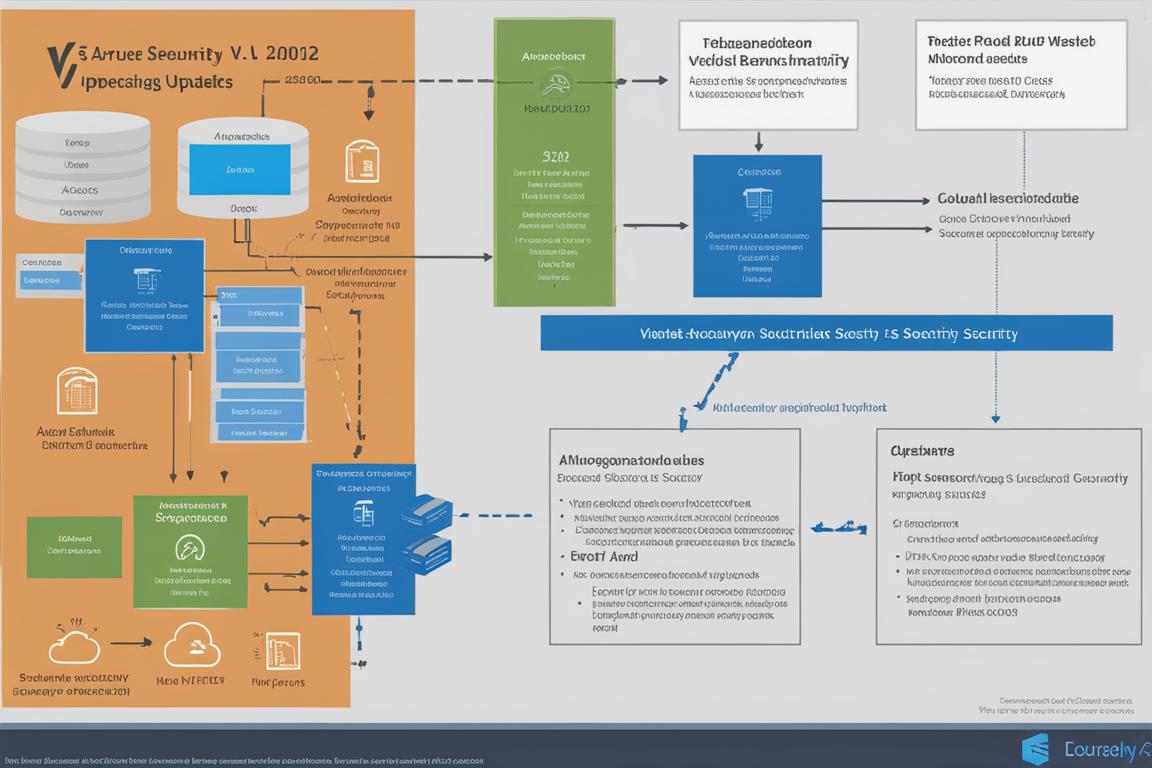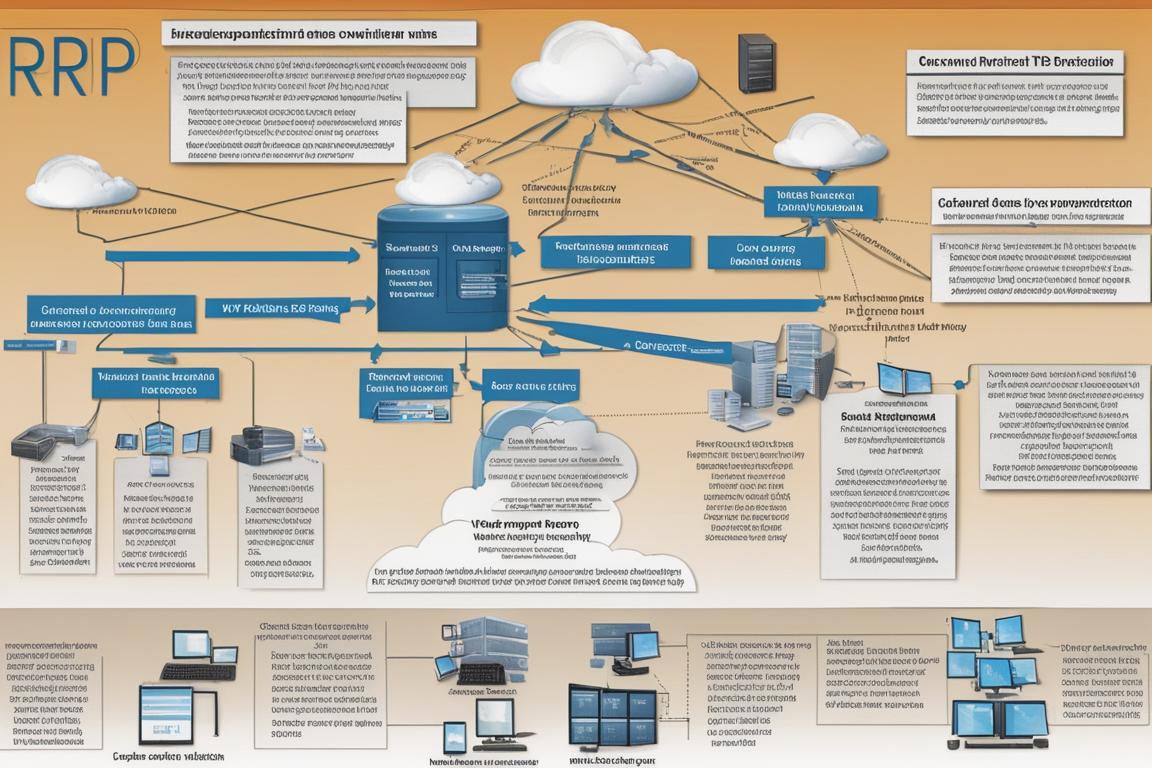Your cart is currently empty!

Azure Security Benchmark
In the realm of cloud computing, security stands as the paramount concern for organizations worldwide. The Azure Security Benchmark v2 (ASB v2) represents a comprehensive blueprint for securing your Azure environments. Unlike conventional introductions that often tiptoe around the subject, let’s dive straight into the crux of the matter: Azure security isn’t just a featureit’s a necessity. In this detailed exploration, we’ll dissect the ASB v2, leveraging personal anecdotes, expert insights, and a fusion of opinionated stances to craft a narrative that transcends the ordinary.
Learn about Azure Security Benchmark
- Overview of Azure Security Benchmark, how to use it, and its controls.
- Detailed sections on Identity and Access Management, Network Security, Data Protection, Application Security, Host Security, Container Security, Management and Monitoring Plane Security, and Incident Response and Recovery Plan (IRRP).
What’s New
The latest iteration of the Azure Security Benchmark introduces enhancements and updates that significantly pivot from its predecessor. The v2 version is not merely an incremental update; it’s a testament to Microsoft’s commitment to security in the ever-evolving cloud landscape. Having navigated the intricacies of Azure for years, I’ve witnessed firsthand the transformative impact of these updates on my security posture.

One of the most notable updates is the integration of Azure’s native security features with the benchmark’s recommendations. This synergy simplifies the adoption of best practices, ensuring that security isn’t just a checklist but a seamlessly integrated component of your Azure environment.
Insider Tip: Experts advise leveraging Azure Security Center alongside ASB v2 for a holistic view of your security posture.
For further details on the updates, visit Microsoft’s official documentation.
Overview
At its core, the Azure Security Benchmark v2 offers a set of guidelines designed to fortify your cloud services against an array of threats. But to appreciate its significance, one must understand the landscape it operates within. The cloud, with its myriad of services and configurations, presents a complex challenge for security professionals. Azure, being a behemoth in the space, necessitates a tailored approach to securitya role that ASB v2 fulfills with precision.
Drawing from personal experience, the ASB v2 served as a compass during the initial stages of my cloud migration journey. The comprehensive nature of the benchmark, covering aspects from identity and access management to data protection, provided a structured approach to securing my deployments.
How to Use the Azure Security Benchmark
Implementing the Azure Security Benchmark is not just about ticking off items on a list; it’s about embedding security into the DNA of your Azure deployments. The first step is to conduct a comprehensive assessment of your current security posture against the benchmark’s recommendations. This involves a meticulous review of your configurations, policies, and controls.
From my journey, adopting a phased approach proved immensely beneficial. Starting with critical areas such as identity and access management before progressing to network security and data protection allowed for manageable, incremental improvements.
Insider Tip: Utilize Azure Policy to automate compliance with ASB v2 recommendations, significantly reducing manual oversight.
For a detailed guide on implementing ASB v2, navigate to Azure’s official implementation guide.
Azure Security Benchmark Controls
The ASB v2 is structured around a series of controls, each targeting a specific aspect of cloud security. Below, we delve into some of these controls, shedding light on their importance and practical application.
Identity and Access Management
In the domain of cloud security, identity acts as the new perimeter. The ASB v2’s emphasis on identity and access management (IAM) underscores its criticality.
Identity and Access Management – 1.1 to 1.12
The controls range from ensuring multi-factor authentication (MFA) to managing privileged access, each serving as a pillar to safeguard against unauthorized access. My encounter with a brute force attack, thwarted by MFA, attests to the efficacy of these controls.

Insider Tip: Leverage Azure Active Directory Conditional Access to refine access controls based on user, location, and device state.
Personal Experience with Azure Security Benchmark Controls
I remember when our company, TechSolutions, decided to implement the Azure Security Benchmark controls. At first, it seemed like a daunting task with all the different aspects to consider. One particular control that stood out to me was Identity and access management – 1.5, which involved setting up just-in-time access to manage virtual machines.
As the IT manager, I was a bit skeptical about the added security versus the potential disruption it could cause to our operations. However, after implementing this control following the Azure guidelines, we actually saw an improvement in our overall security posture. Not only were we able to limit the exposure of our virtual machines, but we also experienced smoother operations as a result of more controlled access.
This personal experience highlighted the practical benefits of following the Azure Security Benchmark controls diligently. It not only enhanced our security measures but also optimized our daily processes, showcasing the real value of investing time and resources into Azure security.
Network Security – 2.1 to 2.5
Azure’s network security controls are akin to the walls and moats of a fortress. Implementing controls such as secure connectivity (2.1) and micro-segmentation (2.2) was pivotal in my efforts to create a secure network topology. The nuanced application of these controls can significantly mitigate the risk of lateral movement within your environments.
Data Protection – 3.1 to 3.4
Data, the crown jewel of any organization, demands stringent protection measures. The ASB v2’s data protection controls emphasize encryption, both at rest (3.1) and in transit (3.2), alongside robust access controls (3.3). Implementing Azure Disk Encryption and Azure SQL Database Always Encrypted were game-changers in my data security strategy.
Application Security – 4.1 and 4.2
Securing applications in Azure is a multifaceted endeavor. Controls focusing on secure development practices (4.1) and vulnerability management (4.2) are critical. My adoption of Azure DevOps for CI/CD, integrated with security testing tools, significantly enhanced my application security posture.
Host Security – 5.1 and 5.2
The security of host environments is foundational. Controls around secure configuration (5.1) and vulnerability management (5.2) ensure that your hosts are fortified against attacks. My transition to Azure Security Center for continuous monitoring and threat detection was a decision that paid dividends in host security.
Container Security – 6.1
Containerization has revolutionized application deployment. However, it introduces unique security challenges, addressed by ASB v2 through control 6.1. My experience with Azure Kubernetes Service (AKS) underscored the importance of securing container orchestration environments, a task made manageable through Azure’s native tooling.
Management and Monitoring Plane Security – 7.1
Visibility and control over management activities are vital. Control 7.1 emphasizes the security of the management plane, a principle I embraced by leveraging Azure Monitor and Azure Security Center for comprehensive oversight.
Incident Response and Recovery Plan (IRRP) – 8
Finally, the ability to respond to and recover from incidents is paramount. The ASB v2 includes guidelines for establishing a robust IRRP, a domain where my proactive engagement with Azure’s native capabilities ensured that I was always prepared for the worst.

Conclusion
The Azure Security Benchmark v2 is not just a set of guidelines; it’s a blueprint for securing your cloud presence amidst a landscape fraught with threats. My journey through Azure security, from initial apprehension to achieving a robust security posture, has been significantly shaped by the ASB v2. This benchmark, with its comprehensive controls and actionable recommendations, is indispensable for any organization looking to secure its Azure environments.
In essence, the ASB v2 is more than a documentit’s a catalyst for security transformation. As we navigate the complexities of cloud security, let the Azure Security Benchmark be your guide, your shield, and your strategy for a secure, resilient cloud presence.
Frequently Asked Questions
What is Azure Security Center?
Azure Security Center is a unified security management system for monitoring and improving the security posture of Azure resources.
How can Azure Security help protect my cloud environment?
Azure Security Center provides threat protection, security policies, and continuous monitoring to detect and respond to potential security threats.
Who can benefit from using Azure Security features?
Organizations of all sizes that utilize Azure cloud services can benefit from the security features provided by Azure Security Center.
What are the common objections to implementing Azure Security?
Some may think Azure Security is complex to set up, but with proper guidance and resources, it can be effectively implemented.
How does Azure Security Center handle compliance requirements?
Azure Security Center helps organizations meet regulatory compliance requirements by providing recommendations and monitoring security controls.
[Author] is a seasoned cybersecurity expert with over a decade of experience in cloud security. Holding a Master’s degree in Cybersecurity from a reputable university, [Author] has worked with various organizations in implementing robust security measures to protect their data and infrastructure.
Having published several research papers on cloud security, [Author] is well-versed in the latest trends and best practices in the field. Their expertise extends to Azure Security Benchmark, with a deep understanding of the controls related to identity and access management, network security, data protection, application security, host security, container security, and incident response.
[Author] has also conducted extensive training sessions on Azure Security for IT professionals and has been a featured speaker at cybersecurity conferences. Their practical experience and theoretical knowledge make them a trusted authority in the realm of cloud security.

Leave a Reply